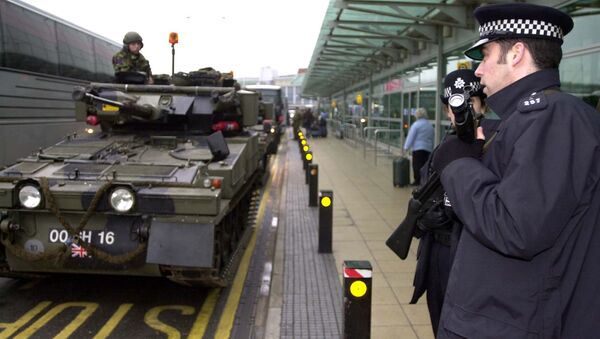Britain's terror threat is set by the Joint Terrorism Analysis Centre (JTAC) which was established in June 2003 and is based in MI5's headquarters at Thames House in London. It is the third time since its inception that the terror threat has been raised to its highest — "critical" — level.
The domestic intelligence agency MI5 takes the lead on JTAC, but it is made up of officials for around 16 government agencies, which includes the other intelligence agencies — GCHQ and MI6 — as well as the police and many other top level officials.
PM has announced the terror threat level has been raised from severe to critical after the Manchester terror attack. https://t.co/uJRJxhekO0 pic.twitter.com/zPjJOEDwrp
— UK Prime Minister (@Number10gov) 23 May 2017
The last times the UK was put on critical alert were in 2006 and 2007, following the London bombings of July 7, 2005 in which 52 people were killed and more than 700 were injured when four terrorists set of explosives on the London Underground and a bus.

Although there were no major incidents in 2006, in June 2007 two Islamism-inspired terrorists drove a Jeep Cherokee loaded with propane canisters was driven into the glass doors of the Glasgow Airport terminal, injuring several people. Both terrorists were arrested at the scene, with one later dying from his injuries and the other being found guilty and sentenced to 32 years in prison.
"We cannot ignore that there is a wider group of individuals linked to this attack. his means that their assessment is not only that an attack remains highly likely, but that a further attack may be imminent," said UK Prime Minister Theresa May in a statement.
According to MI5, the threat level is set based on a series of factors, including available intelligence, terrorist capability and timescale — plus any number of related circumstances.
Home Secretary’s statement on the Manchester attack: https://t.co/yOuO6AOLEx pic.twitter.com/LPJpcUN4La
— Home Office (@ukhomeoffice) 23 May 2017
It is rare that specific threat information is available and can be relied upon. More often, judgments about the threat will be based on a wide range of information, which is often fragmentary, including the level and nature of current terrorist activity, comparison with events in other countries and previous attacks. Intelligence is only ever likely to reveal part of the picture.
PM: The terrorists will never win — and our values, our country and our way of life will always prevail. pic.twitter.com/THovPugXVq
— UK Prime Minister (@Number10gov) 23 May 2017
An examination of what is known about the capabilities of the terrorists in question and the method they may use based on previous attacks or from intelligence. This would also analyze the potential scale of the attack.
"The threat level expresses the likelihood of an attack in the near term. We know from past incidents that some attacks take years to plan, while others are put together more quickly. In the absence of specific intelligence, a judgement will need to be made about how close an attack might be to fruition. Threat levels do not have any set expiry date, but are regularly subject to review in order to ensure that they remain current," MI5 states.


